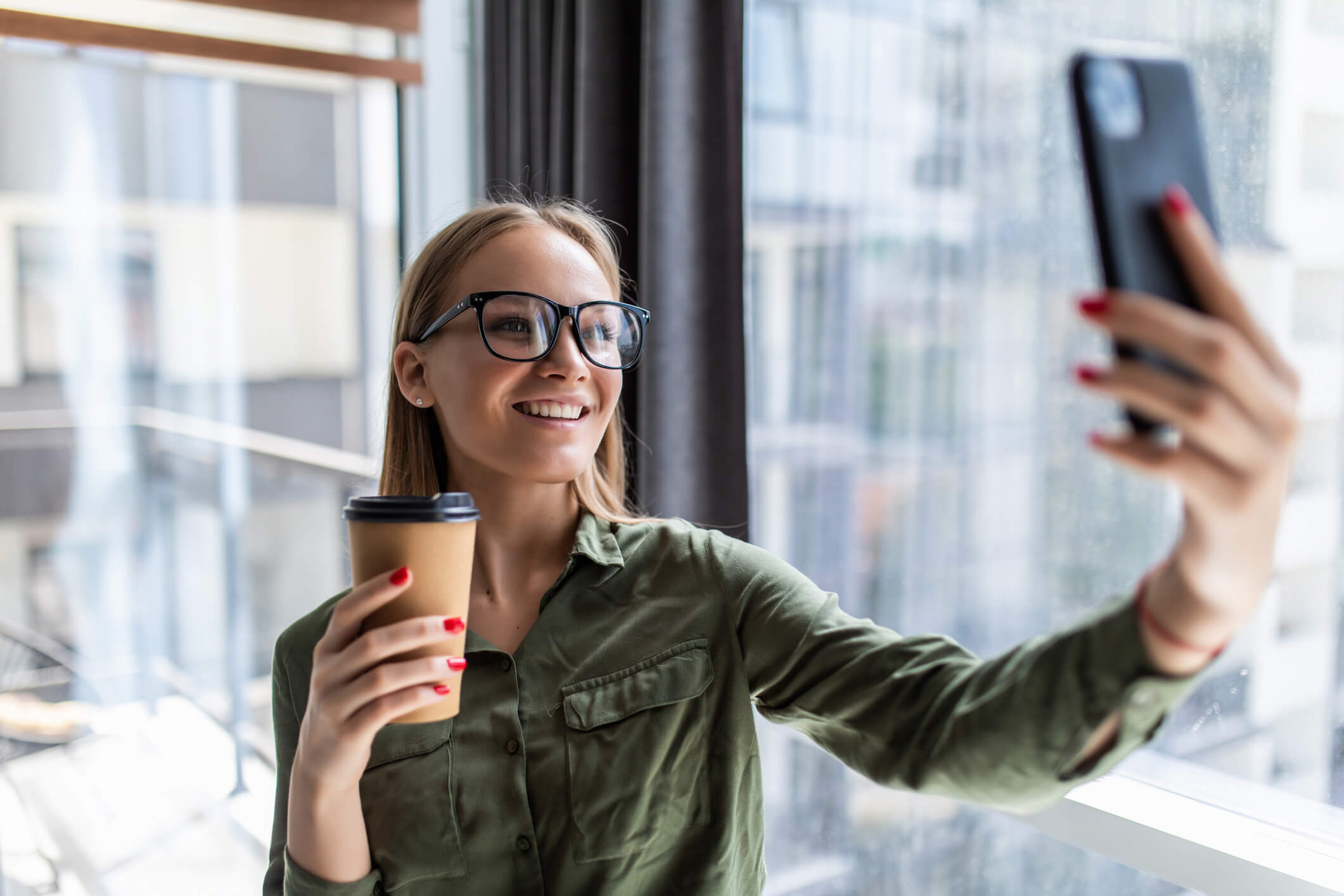The selfie image takes many shapes, from Ellen DeGeneres’ star-studded Oscar selfie to astronaut Chris Hadfield’s truly out-of-this-world reflecting space snap. Since the advent of social media, the selfie has flourished and, in many ways, irrevocably transformed how we view photography. But when did it all begin, and how did it become so famous quickly? Is the selfie still important today, particularly for marketers, or was it just a fad?

The History of The Selfie
Historians think a Philadelphia resident named Robert Cornelius took the world’s first selfie in 1839 using a daguerreotype camera.
While the selfie in its contemporary version is regularly used as a scapegoat for our digital vanity, it appears that Cornelius just wanted to see what he looked like, utilizing photography’s new capability to repeat centuries of artists producing self-portraits. Proof that, as humans, we have always wanted to capture a snapshot of ourselves.
Fast-forward to the smartphone era, and the selfie received an official place in the Oxford lexicon in 2013. Since then, the usage of the phrase on the Internet has risen by around 17,000%. The simplicity of smartphone photo-snapping fueled the growth in self-taken images, generating a fad that reversed the visual script.
With the advancement of ever-cheaper international travel and the popularity of the visual network Instagram, selfies have expanded internationally. Indeed, the site gave birth to the first hashtag-based selfie trends, such as #duckface and #IWakeUpLikeThis.
Selfies Meet Marketing
The emergence of selfie-driven hashtag trends and the format’s rising popularity provided a new perspective for businesses and marketers wanting to engage with their target audience on a whole new level.
Around 57 million #selfie hashtags were introduced into the social media in 2013. The selfie’s visual magnificence, sheer creative breadth, and possibility for engaging user-generated content (e.g., Dunkin Donuts’ 2014 Shark Week selfie campaign) became appealing to businesses across sectors.
In recent years, there have been several selfie-centric digital marketing campaigns or advertisements—here are a few hand-picked examples:

The Walking Dead
The Walking Dead is one of the most well-known zombie dramas on television. What began as cult programming rapidly became a flesh-hungry global craze, becoming one of the most-watched series in television history. This is partly due to the show’s spectacular substance and its network’s astute digital marketing tactics.
To generate interest in the show, the AMC Network created an app that turns Walking Dead fans into flesh-eating zombies. AMC garnered a good amount of interaction with terrifying user-generated material by advertising its app across social media and encouraging users to post zombified images on Instagram using the hashtag #deadyourself.
Beats By Dre
Beats By Dre joined the selfie trend in 2014 to advertise its new Solo2 headphones, drawing inspiration from Karen X. Cheng’s famous film, ‘The doughnut selfie.’ Beats By Dre immediately broke through the clamor by motivating influencers, celebrities, and fans alike to mimic the donut-style selfie, adding their creative take while wearing a pair of Solo2s. The ad song’s enticing melodies and appealing substance captivated the minds of many, earning the brand 10.6 million campaign views in a couple of weeks—a perfect storm of creativity and execution.
Volvo
Volvo started its #SelfieForSafety campaign in 2019 to highlight its safety-first brand strategy. The automobile maker urged customers to upload a selfie wearing a seatbelt inside their parked cars using the campaign’s hashtag. Volvo’s effort garnered a fair degree of customer support, but more significantly, the brand used it for critical research. Volvo determined that four out of ten individuals wear their seatbelts improperly by studying the images—a revelation essential in the brand’s future advancements—a testimony to the selfie’s adaptability.
Selfies Today
Before the global lockdown, the quantity of traveling selfies wore the medium a bit thin. However, given our present COVID-19 environment, selfies have witnessed something of a revival, with individuals photographing themselves in more stylish masks (photos now known as ‘maskies’). In addition, to combat the surge in online fraud during the epidemic, organizations such as banks have used photos to authenticate official clients.
As technology evolves, we find new and exciting ways to express our creativity and connect with one idea. For years now, the selfie has been a unique form of self-expression. Even with the rise of apps such as TikTok, it does not seem like this will change anytime soon.
 About Complete Controller® – America’s Bookkeeping Experts Complete Controller is the Nation’s Leader in virtual bookkeeping, providing service to businesses and households alike. Utilizing Complete Controller’s technology, clients gain access to a cloud platform where their QuickBooks™️ file, critical financial documents, and back-office tools are hosted in an efficient SSO environment. Complete Controller’s team of certified US-based accounting professionals provide bookkeeping, record storage, performance reporting, and controller services including training, cash-flow management, budgeting and forecasting, process and controls advisement, and bill-pay. With flat-rate service plans, Complete Controller is the most cost-effective expert accounting solution for business, family-office, trusts, and households of any size or complexity.
About Complete Controller® – America’s Bookkeeping Experts Complete Controller is the Nation’s Leader in virtual bookkeeping, providing service to businesses and households alike. Utilizing Complete Controller’s technology, clients gain access to a cloud platform where their QuickBooks™️ file, critical financial documents, and back-office tools are hosted in an efficient SSO environment. Complete Controller’s team of certified US-based accounting professionals provide bookkeeping, record storage, performance reporting, and controller services including training, cash-flow management, budgeting and forecasting, process and controls advisement, and bill-pay. With flat-rate service plans, Complete Controller is the most cost-effective expert accounting solution for business, family-office, trusts, and households of any size or complexity.



